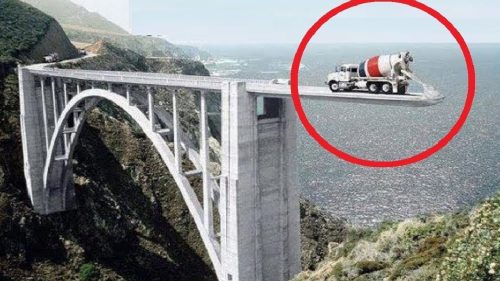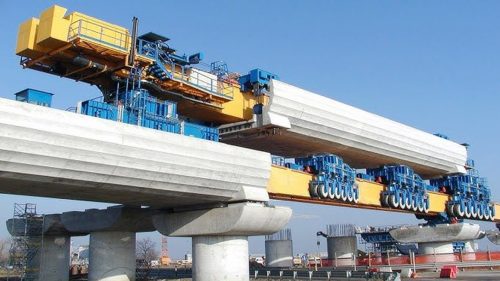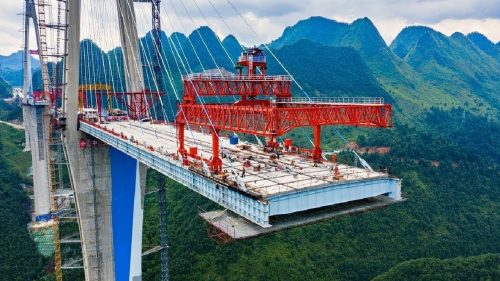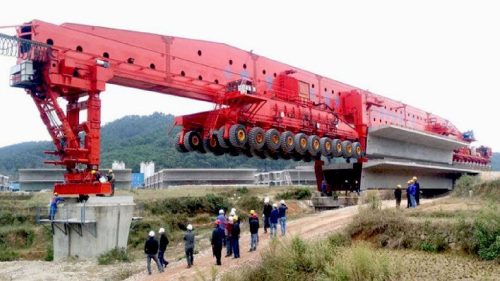In the world of construction, bridges stand as remarkable feats of engineering and design, connecting distant lands and fostering progress. With the advent of modern technology, the process of building bridges has witnessed a remarkable transformation. This article takes a deep dive into the realm of contemporary bridge construction technology and the awe-inspiring heavy machinery that plays a pivotal role in shaping the world’s infrastructural landscape.

Technological Innovations in Bridge Construction: Today’s bridge construction landscape is marked by a myriad of technological advancements that have revolutionized traditional methods. Computer-Aided Design (CAD) software enables engineers to create intricate blueprints with precision, streamlining the planning phase. Building Information Modeling (BIM) facilitates a comprehensive overview of the project, enhancing collaboration among multidisciplinary teams.
1. Advanced Materials and Techniques: Modern bridges are often constructed using cutting-edge materials that combine durability, sustainability, and aesthetic appeal. High-performance concrete, composite materials, and corrosion-resistant alloys extend the lifespan of bridges while minimizing maintenance needs. Innovative construction techniques, such as precast concrete segments and segmental construction, enable faster assembly and reduced disruption to traffic.

2. Smart Monitoring and Maintenance: The integration of sensors, IoT devices, and real-time monitoring systems has led to the rise of smart bridges. These structures are equipped with sensors that capture data on structural health, load distribution, and environmental conditions. This data is analyzed to ensure safety and prompt preventive maintenance, prolonging the life of the bridge.
Astounding Heavy Machinery in Action: Behind every remarkable bridge, there is an array of heavy machinery that plays a crucial role in bringing the architect’s vision to life. These machines exhibit power, precision, and innovation on an unparalleled scale.
1. Tower Cranes: Tower cranes, towering over construction sites, are essential for lifting and placing heavy materials to great heights. With their impressive lifting capacities and precise control systems, tower cranes are instrumental in erecting the towering structures of cable-stayed and suspension bridges.
2. Crawler Cranes: Crawler cranes, equipped with a mobile base and tracks, are known for their stability and ability to navigate challenging terrains. They are often employed for heavy lifting tasks, such as placing massive bridge segments and components with pinpoint accuracy.

3. Pile Drivers: Pile drivers are the workhorses responsible for foundation construction. They drive steel, concrete, or wooden piles into the ground to provide a stable base for bridge pillars and supports.
Conclusion: The world of bridge construction has entered an era of innovation, where technology and heavy machinery converge to create awe-inspiring structures that redefine connectivity and progress.

From advanced materials to smart monitoring systems and formidable heavy machinery, the synergy of these elements brings to life bridges that are not only functional but also iconic symbols of human ingenuity. As technology continues to evolve, we can only anticipate even more remarkable feats in the realm of bridge engineering.
